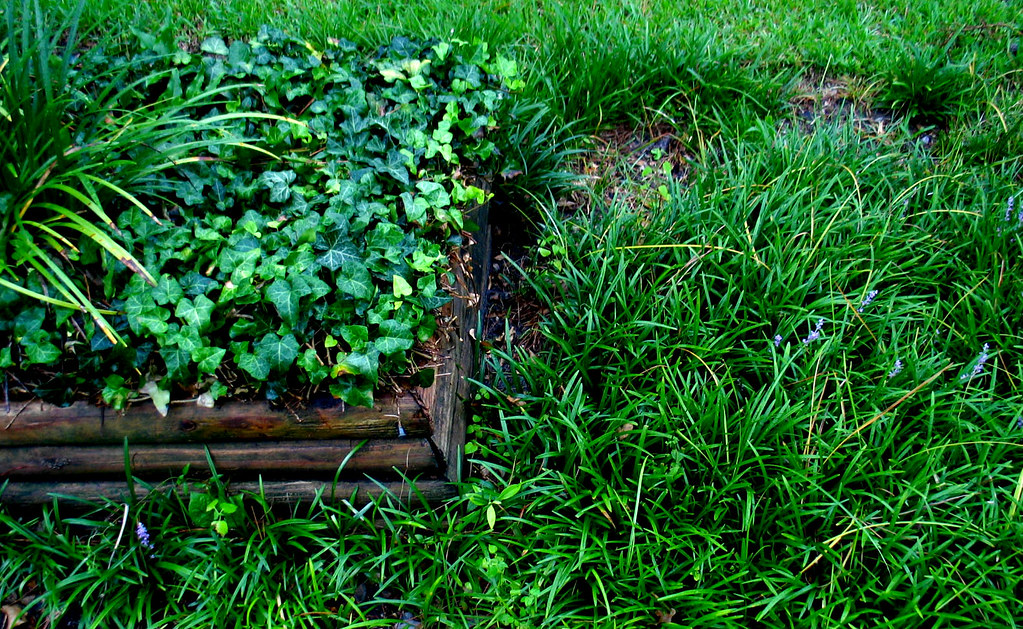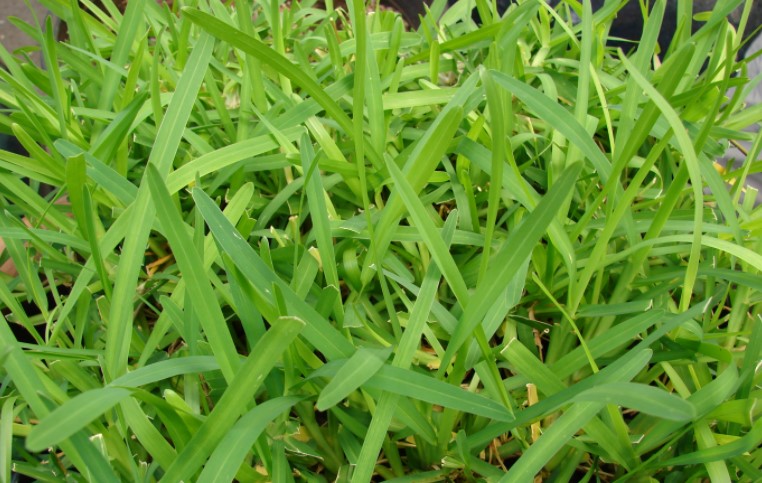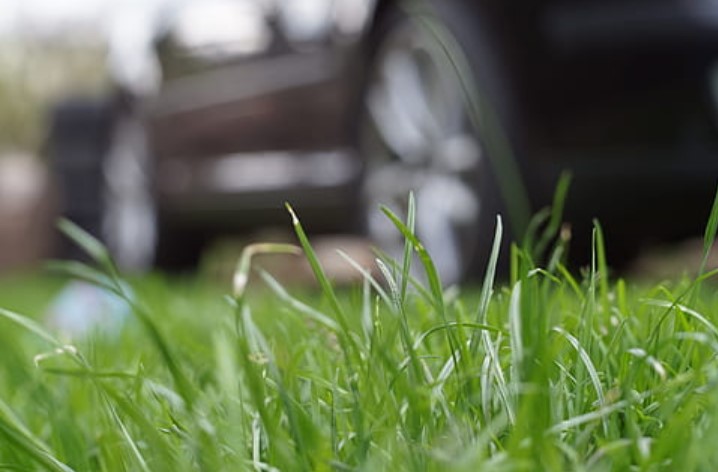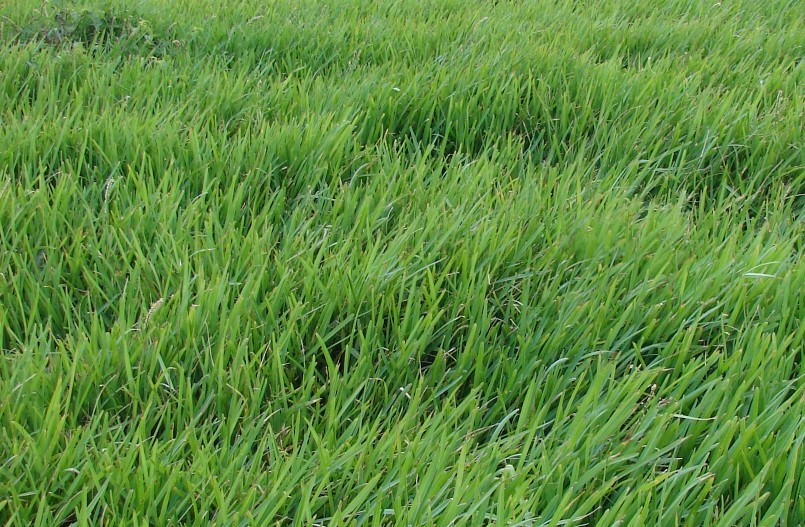- Bermuda vs St Augustine Grass: Which Is Right For You? - March 15, 2021
- How to Fix Yellow Grass: Top Tricks and Ideas You Must Know - March 14, 2021
- Best Soil Test Kits – 7 Top Picks to Get the Job Done - December 16, 2020
Lawns are a commitment. You’d spend a lot of time and money trying to get a green lawn that would be the envy of the neighborhood. But sometimes, homeowners can fail just because they didn’t choose the right type of grass. There are several options as well, but two of the most popular are Bermuda grass vs St Augustine grass.
It would seem that St. Augustine grass and Bermuda grass are highly similar. They are both warm-season grasses that can help blanket your lawn with a soothing, calming, and relaxing shade of green.
But you should know that there are differences between these two types of grass that can make it perfect for specific applications and uses. What are these?
Main Differences Between Bermuda Grass vs St.Augustine
The main differences between Bermuda Grass vs St.Augustine are:
- Bermuda grass will need full sunlight and cannot grow as healthy in the shade, whereas St.Augustine grass can easily thrive in the shade.
- Bermuda grass is more drought-tolerant, whereas St.Augustine grass requires more water.
- Bermuda grass doesn’t need a lot of fertilization, whereas St.Augustine requires frequent fertilization.
- Bermuda grass can be started from seed, whereas the best way to establish St.Augustine grass is by laying sod.
- Bermuda grass is more well-rounded and can be used for golf courses and yards, whereas St.Augustine is perfect for lawns.
- Bermuda grass can withstand being stepped on a lot, while St. Augustine grass prefers that you keep off it.
Before you decide on a particular grass type, you should be familiar with each one’s characteristics. Read on and discover the unique features of both St. Augustine grass and Bermuda grass.
Bermuda Grass: Everything You Need to Know

If you frequent your local park, chances are, they are using Bermuda grass. The hardy grass needs can grow healthy in hot weather, under full sun, and even during drought. Its fine texture and being able to withstand heavy foot traffic make it the right choice for households with dogs, cats, and kids who love to play in the yard.
Caring for Bermuda Grass
Bermuda grass is a warm-season grass. This grass can handle a bit of a cold. It does go dormant when the weather gets chilly. When temperatures go below 60 degrees Fahrenheit (15 degrees Celsius), expect your Bermuda grass to turn brown.
In hotter climates, however, this grass stays green all year round. Here are a few easy tips on how to grow Bermuda grass:
Best time to plant
Being a warm-season grass, it’s best to start your Bermuda grass lawn when the warm temperatures are more or less consistent. This timeframe will correlate to around March or April, depending on your region.
How to plant
You can start Bermuda grass from springs or sods. But you can also use seeds if you want to save. You can get a one-, five-, or ten-pound bag of Bermuda grass seed. You will need about a pound (half a kilogram) of Bermuda grass seeds to cover an area of 1,000 square feet.
Check your Bermuda grass as it grows
Remember that Bermuda grass can be very invasive. If you don’t like it to get into parts of your yard, you should remember that once the seed sprouts, it’s going to be a bit of a challenge to control.
Starting a Bermuda Grass Lawn by Seeds
Prepare the area you want to plant on by raking it until the ground surface is smooth. Mix the Bermuda grass seeds with an equal amount of sand, so if you have half a pound of seeds, you should mix that with half a pound of sand. You can just spread the sand and see the mixture by hand or by using a product such as the Scotts Elite Spreader.
Ensure complete coverage of your lawn by first spreading lengthwise and then spreading crosswise.
How Much Water Does a Bermuda Grass Lawn Need?

Most people rely on the knowledge that Bermuda grass is drought tolerant. But that doesn’t mean that you can get away not watering it.
But Bermuda grass, like other types of grasses, needs an inch of water every seven to 10 days when there is no rain. You can grow healthier Bermuda grass by watering deeply and infrequently, like giving it an inch of water on a single day, than spreading out your watering by several days.
Deep watering will help the grass to send out its roots deeper into the soil. What’s more, dormant Bermuda grass will also need a bit of watering so that the roots, stolons, and rhizomes do not dry out.
If you have recently planted the grass seeds, you will need to water your lawn daily. You can get away with just wetting the soil while the seeds germinate and sprout. But once the lawn is established, change the watering schedule to a once a week thing, giving the lawn an inch of water.
During dormancy, apply around 0.25 to 0.5 inches of water. Watering dormant Bermuda grass will also help it against the cold.
Other Things to Remember When Caring for Bermuda Grass
And here are some more tips if you want a thriving Bermuda grass lawn:
- If your Bermuda grass reaches two inches (five centimeters) high, it’s time to mow it. Make sure that the blade is razor-sharp. Mowing the Bermuda grass will not only keep it healthy but also make it harder and can encourage it to spread faster.
- You can fertilize the grass around six weeks after planting. Use a complete fertilizer with a slow-release mechanism for nitrogen. For weed control, you will want to apply the chemicals during the fall.
- Bermuda grass is not tolerant to shade, so if you have big trees on your property, it may not do very well.
The Bottom Line about Bermuda Grass
Bermuda grass is a good choice for lawns if you want to use seeds rather than plugs or sods. It’s effortless to take care of and only needs an inch of water every week once it is established. It’s hardy to both drought and colder temperatures too.
It’s the fastest-growing of all warm-season grasses and can spread quickly because of the rhizomes and stolons that it has. It may be invasive, but it is the ideal choice if your lawn receives heavy foot traffic.
Pros
- Quick to establish
- Can grows in different soil types
- Resistant to drought
- Can handle high foot traffic
- Can compete with weeds
Cons
- Some find Bermuda grass invasive
- It turns brown in colder weather and may enter dormancy.
- Not suitable for shaded areas
St. Augustine Grass: What You Should Know

St. Augustine Grass is another warm-season type of turf that you can find in the usual suspects: Florida, Texas, California, and Hawaii. This salt-tolerant grass is an ideal choice if you live near the coast or next to seas and oceans.
St. Augustine grass can crowd out the weeds that grow amidst it. Because of their flat and broad blades, they are perfect ground covers as well.
Caring for St. Augustine Grass

You will need to maintain St. Augustine grass regularly because it grows fast, especially during the warmer months. When you grow St. Augustine grass, your lawnmower will be your best friend.
Mow the lawn when the blades grow more than three to four inches long. If you cut too much, the grass will become thinner, and weeds may overrun it.
Depending on how fast it grows, you may need to mow every five days, but sometimes, you can let it grow for two weeks before you need to do anything. You can expect to cut more frequently during the summer and less during fall and spring.
In places that have cold climates, your St. Augustine grass may go into dormancy during which, the grass will turn yellow or brown. If it’s still brown, do not mow St. Augustine grass. Wait until it starts to green up during the first days of spring.
Starting a St. Augustine Grass Lawn
St. Augustine grass is usually started using sods. This is because seeds for this type of grass are costly.
You can give some space in between the sods as the stolons can grow fast to fill in the spaces between them. When laying the sod, you should water immediately after so that the roots can take hold.
If you live in a warmer region, you can plant St. Augustine plugs any time of the year.
Maintenance
Because St. Augustine grass can form a mean layer of thatch, the thick layer of dead grass and organic matter can choke the soil and prevent it from getting the required moisture and air. Remove thick thatch to help your grass grow healthy.
You should dethatch in the first few weeks of spring, just before you apply herbicide. You will need to mow your lawn until the grass is only two inches tall.
After that, you can use a manual dethatcher to do your thing. You will need to bag up the thatch and then water your lawn after this process. You will also want to aerate your lawn if the soil becomes compacted.
Fertilizing St. Augustine Grass
St. Augustine grass may need fertilizers to thrive. You can fertilize the grass twice during the growing season, perhaps early in May and then in July.
When your lawn becomes really green, you can fertilize the grass using half a pound to a pound of nitrogen for every 1,000 square feet of grass that you have. You will need a fertilizer that is rich in phosphorus, nitrogen and has iron in it.
Watering
You should water St. Augustine grass to avoid subjecting it drought stress. You will need to add anywhere from 0.75 to 1 inch of water when your lawn appears dry.
Pros
- Shade tolerant and does not require full sun.
- Easy to maintain
- It gives you a carpet-like lawn.
- Competes with weed
- Heat- and humidity-tolerant
- Saltwater tolerant
Cons
- It can’t be started by seed.
- Sensitive to cinch bugs and other pests and diseases
- Not too hardy for colder temperatures
- Not hardy to drought
- It needs to be fertilized.
- Not suitable for high traffic areas
Choosing the Best Grass for Your Lawn
If you are a bit challenged in choosing between Bermuda grass and St. Augustine grass, let us make it easier for you.
Choose Bermuda If…
1. You live in USDA zone 7. Bermuda grass and St. Augustine grass both thrive in zones 8, 9, and 10, but Bermuda grass is a bit harder to colder temperatures in zone 7.
2. Your lawn gets full sun. Bermuda grass demands full sunlight and may not thrive in shaded locations around your yard.
3. You like an easy way to start on your lawn. You can easily create a Bermuda grass lawn using seeds, unlike St. Augustine grass. Once established, mowing Bermuda grass frequently will make it grow faster.
4. You have good soil condition. Bermuda grass doesn’t require too much nitrogen to thrive; at the very least, it needs less of the nutrient than St. Augustine grass.
5. You want to save on water. Don’t get us wrong, both Bermuda and St. Augustine grasses can be water guzzlers. But St. Augustine needs significantly more water than Bermuda. If you are currently in a state or area with strict water-saving policies or have frequent droughts, don’t choose St. Augustine grass.
6. Bermuda grass also has that added advantage of being drought tolerant. Plus, it doesn’t really need a lot of water when it’s dormant.
7. Choose Bermuda grass if you want thinner blades of grass, which resembles a collection of spikes.
Choose St. Augustine Grass If…

1. Your yard has a lot of shady areas. St. Augustine grass can thrive in both full sunlight and shaded areas.
2. You want a faster way to see a green lawn. St. Augustine grass is often started by laying plugs or sod because it’s not very reliable when you start it with seeds.
3. You like spending time maintaining your lawn. Between these two, St. Augustine grass can take up more of your time when it comes to maintenance. This type of grass loves getting a haircut often. It also develops thatch faster than Bermuda grass.
4. Your soil’s condition is less than ideal. St. Augustine fares better than Bermuda grass when growing in sandy soil or if you live near the sea. You don’t need to top it with compost very often, as you do with Bermuda grass.
5. Choose St. Augustine grass if you prefer large, broad blades.
FAQs
Answer: Warm-season grasses, such as Bermuda and St. Augustine grass, are sometimes called southern grasses. These grasses are not wintered hardy and grow quite well in hot areas.
These grasses can thrive even in the hottest days of summer and will grow fast during spring. In some cases, warm-season grasses will go into dormancy and turn brown in the colder winter months.
Other examples of warm-season grasses are:
• Centipede grass
• Zoysia
• Bahiagrass
• Carpet grass
Answer: Getting the right type of grass for your lawn is not just an aesthetic consideration. Sure, Bermuda and St. Augustine grasses are both stunning to look at, especially when they turn what used to be mud and empty brown spaces in your yard into something green and flourishing.
But if you choose a grass type because of how it looks alone, then you might be wasting money and effort. As you can see, different grasses require different care and growing conditions.
For instance, if your lawn has several areas with shade, then you know Bermuda grass isn’t the right choice for that. So it goes beyond beauty, but you’re also ensuring that the right grass will stay in your yard for years to come.
Answer: Some people think that lawns are bad news for the environment. They think about pesticides, herbicides, fungicides, and other chemicals you use for your lawns. They have this mental image of these chemicals seeping through the soil and into groundwater.
Some people do not like the tremendous amount of water you put into lawns. But apart from looking good, a healthy lawn is also environmentally friendly.
For one, grasses can clean the air. It can trap carbon dioxide while also reducing erosion whenever it rains. Your lawn can also improve the soil where it’s on and help reduce temperatures.
Choose Between Bermuda and St. Augustine Grasses with Confidence
The perfect grass for your lawn will depend on a lot of things, including your personal preference, what you’re going to use your lawn for, and the unique conditions your yard has.
Now that you know the characteristics of Bermuda grass and St. Augustine grass, you can now confidently choose between these two to ensure that your lawn looks healthy and verdant for years to come.

